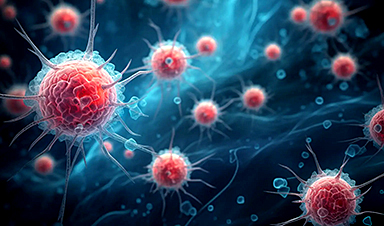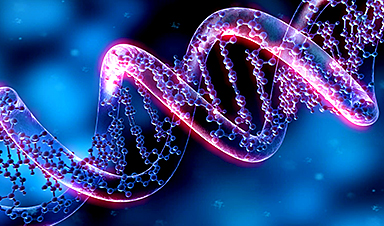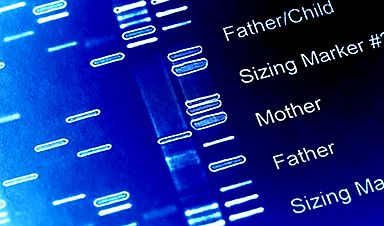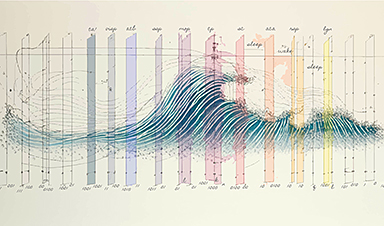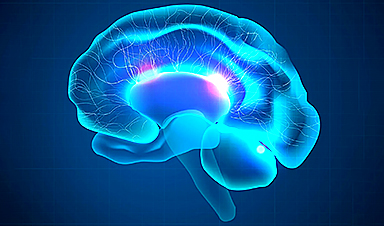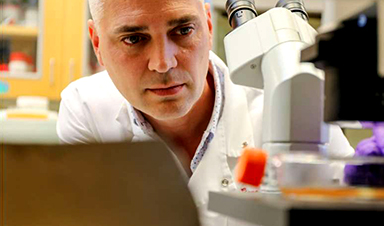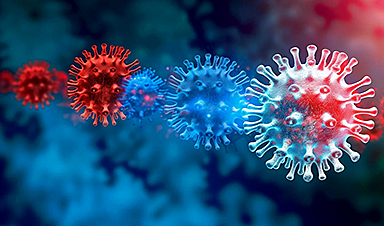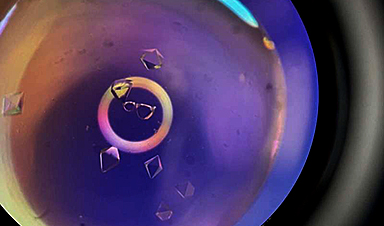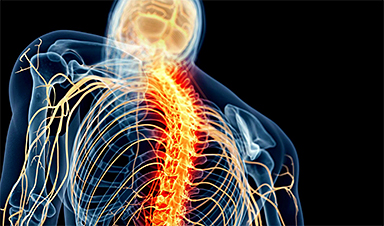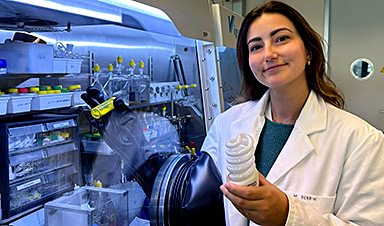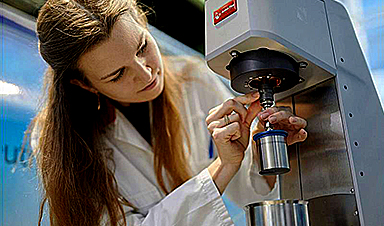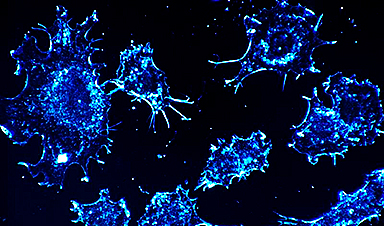An MD Anderson study provides a deeper understanding of the progression of gastric cancer and highlights a potential therapeutic target.
A recent study conducted by scientists at The University of Texas MD Anderson Cancer Center offers new insight into how the tumor microenvironment changes during the development of gastric cancer. Highlights of the study, published in Cancer Cell, include a connection between multicellular communities and patient outcomes, as well as a promising new target for therapy.
Gastric adenocarcinoma ranks among the deadliest cancers worldwide, primarily due to its natural resistance to treatment. However, the cellular and molecular processes that drive the transition from early pre-cancerous stages to tumor formation and metastasis remain largely unclear. This study illuminates the ways in which different immune and stromal cell subsets change throughout the progression of gastric cancer.

Linghua Wang, M.D., Ph.D. Credit: MD Anderson Cancer Center
The study was conducted by Linghua Wang, M.D., Ph.D., associate professor of Genomic Medicine, in collaboration with Jaffer Ajani, M.D., professor of Gastrointestinal Medical Oncology, and Ruiping Wang, Ph.D., postdoctoral fellow in the Wang Lab.
By obtaining single-cell RNA sequencing (scRNA-seq) data from 68 gastric adenocarcinoma samples encompassing various disease stages — including precancerous lesions, localized tumors, and distant metastases — along with normal tissue and peripheral blood samples, the team characterized the diverse immune and stromal cell populations within the tumor microenvironment and discovered exploitable targets to modulate the tumor microenvironment.
A novel approach allows researchers to dissect the complex tumor microenvironment
Various immune and stromal cell subsets formed multicellular communities, or collections of cell states, present in the tumor microenvironment of an individual tumor sample. The research team termed these groups “ecotypes” and identified six unique ecotypes, with each dominated by specific immune and stromal cell states.
“While many published single-cell studies have focused on characterizing the heterogeneity of each individual cell compartment, our study utilized a novel approach and concept of integrating various components of the tumor microenvironment to define ecotypes and investigated their clinical significance,” Wang said. “This approach can readily be applied to studies in other cancer types.”
A notable discovery is that two ecotypes (EC3 and EC6) correlated with different histological, genomic, and clinical features of primary gastric adenocarcinomas. Tumors categorized as EC3 were composed mainly of immune cell subsets, whereas EC6 tumors predominantly included stromal cell subsets. Patients with EC6 tumors had more aggressive disease and significantly shorter survival compared to those with EC3 tumors.
Findings point to SDC2 as a potential therapeutic target in stromal cells
While stromal components within the tumor microenvironment play crucial roles in tumor initiation, progression, and metastases, cancer treatment strategies have thus far rarely focused on modulating stromal components, especially in patients with gastric adenocarcinoma.
This study identified SDC2 as a potential target worthy of further investigation. Researchers found SDC2 overexpression in stromal cells, especially in cancer-associated fibroblasts, was correlated with aggressive disease and advanced stages, and strongly associated with unfavorable survival outcomes. In addition, SDC2 expression was consistently elevated in stromal cells across various other cancer types, including pancreatic cancer, colorectal cancer, bladder cancer, breast cancer, and clear cell renal cell carcinoma.
“There are unmet needs for patients with gastric adenocarcinoma every step of the way in their clinical journey,” Ajani said. “Our team strives to use novel interrogations to discover new therapeutic targets to improve the outcomes of these patients. While there are many questions left to answer, targeting SDC2 in cancer-associated fibroblasts represents a potentially exciting avenue that warrants further investigation.”
Reference: “Evolution of immune and stromal cell states and ecotypes during gastric adenocarcinoma progression” by Ruiping Wang, Shumei Song, Jiangjiang Qin, Katsuhiro Yoshimura, Fuduan Peng, Yanshuo Chu, Yuan Li, Yibo Fan, Jiankang Jin, Minghao Dang, Enyu Dai, Guangsheng Pei, Guangchun Han, Dapeng Hao, Yating Li, Deyali Chatterjee, Kazuto Harada, Melissa Pool Pizzi, Ailing W. Scott, Ghia Tatlonghari and Linghua Wang, 6 July 2023, Cancer Cell.
DOI: 10.1016/j.ccell.2023.06.005
News
The Silent Battle Within: How Your Organs Choose Between Mom and Dad’s Genes
Research reveals that selective expression of maternal or paternal X chromosomes varies by organ, driven by cellular competition. A new study published today (July 26) in Nature Genetics by the Lymphoid Development Group at the MRC [...]
Study identifies genes increasing risk of severe COVID-19
Whether or not a person becomes seriously ill with COVID-19 depends, among other things, on genetic factors. With this in mind, researchers from the University Hospital Bonn (UKB) and the University of Bonn, in [...]
Small regions of the brain can take micro-naps while the rest of the brain is awake and vice versa
Sleep and wake: They're totally distinct states of being that define the boundaries of our daily lives. For years, scientists have measured the difference between these instinctual brain processes by observing brain waves, with [...]
Redefining Consciousness: Small Regions of the Brain Can Take Micro-Naps While the Rest of the Brain Is Awake
The study broadly reveals how fast brain waves, previously overlooked, establish fundamental patterns of sleep and wakefulness. Scientists have developed a new method to analyze sleep and wake states by detecting ultra-fast neuronal activity [...]
AI Reveals Health Secrets Through Facial Temperature Mapping
Researchers have found that different facial temperatures correlate with chronic illnesses like diabetes and high blood pressure, and these can be detected using AI with thermal cameras. They highlight the potential of this technology [...]
Breakthrough in aging research: Blocking IL-11 extends lifespan and improves health in mice
In a recent study published in the journal Nature, a team of researchers used murine models and various pharmacological and genetic approaches to examine whether pro-inflammatory signaling involving interleukin (IL)-11, which activates signaling molecules such [...]
Promise for a universal influenza vaccine: Scientists validate theory using 1918 flu virus
New research led by Oregon Health & Science University reveals a promising approach to developing a universal influenza vaccine—a so-called "one and done" vaccine that confers lifetime immunity against an evolving virus. The study, [...]
New Projects Aim To Pioneer the Future of Neuroscience
One study will investigate the alterations in brain activity at the cellular level caused by psilocybin, the psychoactive substance found in “magic mushrooms.” How do neurons respond to the effects of magic mushrooms? What [...]
Decoding the Decline: Scientific Insights Into Long COVID’s Retreat
Research indicates a significant reduction in long COVID risk, largely due to vaccination and the virus’s evolution. The study analyzes data from over 441,000 veterans, showing lower rates of long COVID among vaccinated individuals compared [...]
Silicon Transformed: A Breakthrough in Laser Nanofabrication
A new method enables precise nanofabrication inside silicon using spatial light modulation and laser pulses, creating advanced nanostructures for potential use in electronics and photonics. Silicon, the cornerstone of modern electronics, photovoltaics, and photonics, [...]
Caught in the actinium: New research could help design better cancer treatments
The element actinium was first discovered at the turn of the 20th century, but even now, nearly 125 years later, researchers still don't have a good grasp on the metal's chemistry. That's because actinium [...]
Innovative Light-Controlled Drugs Could Revolutionize Neuropathic Pain Treatment
A team of researchers from the Institute for Bioengineering of Catalonia (IBEC) has developed light-activated derivatives of the anti-epileptic drug carbamazepine to treat neuropathic pain. Light can be harnessed to target drugs to specific [...]
Green Gold: Turning E-Waste Into a Treasure Trove of Rare Earth Metals
Scientists are developing a process inspired by nature that efficiently recovers europium from old fluorescent lamps. The approach could lead to the long-awaited recycling of rare earth metals. A small molecule that naturally serves [...]
Cambridge Study: AI Chatbots Have an “Empathy Gap,” and It Could Be Dangerous
A new study suggests a framework for “Child Safe AI” in response to recent incidents showing that many children perceive chatbots as quasi-human and reliable. A study has indicated that AI chatbots often exhibit [...]
Nanoparticle-based delivery system could offer treatment for diabetics with rare insulin allergy
Up to 3% of people with diabetes have an allergic reaction to insulin. A team at Forschungszentrum Jülich has now studied a method that could be used to deliver the active substance into the [...]
Nanorobot kills cancer cells in mice with hidden weapon
Researchers at Karolinska Institutet in Sweden have developed nanorobots that kill cancer cells in mice. The robot's weapon is hidden in a nanostructure and is exposed only in the tumor microenvironment, sparing healthy cells. [...]
